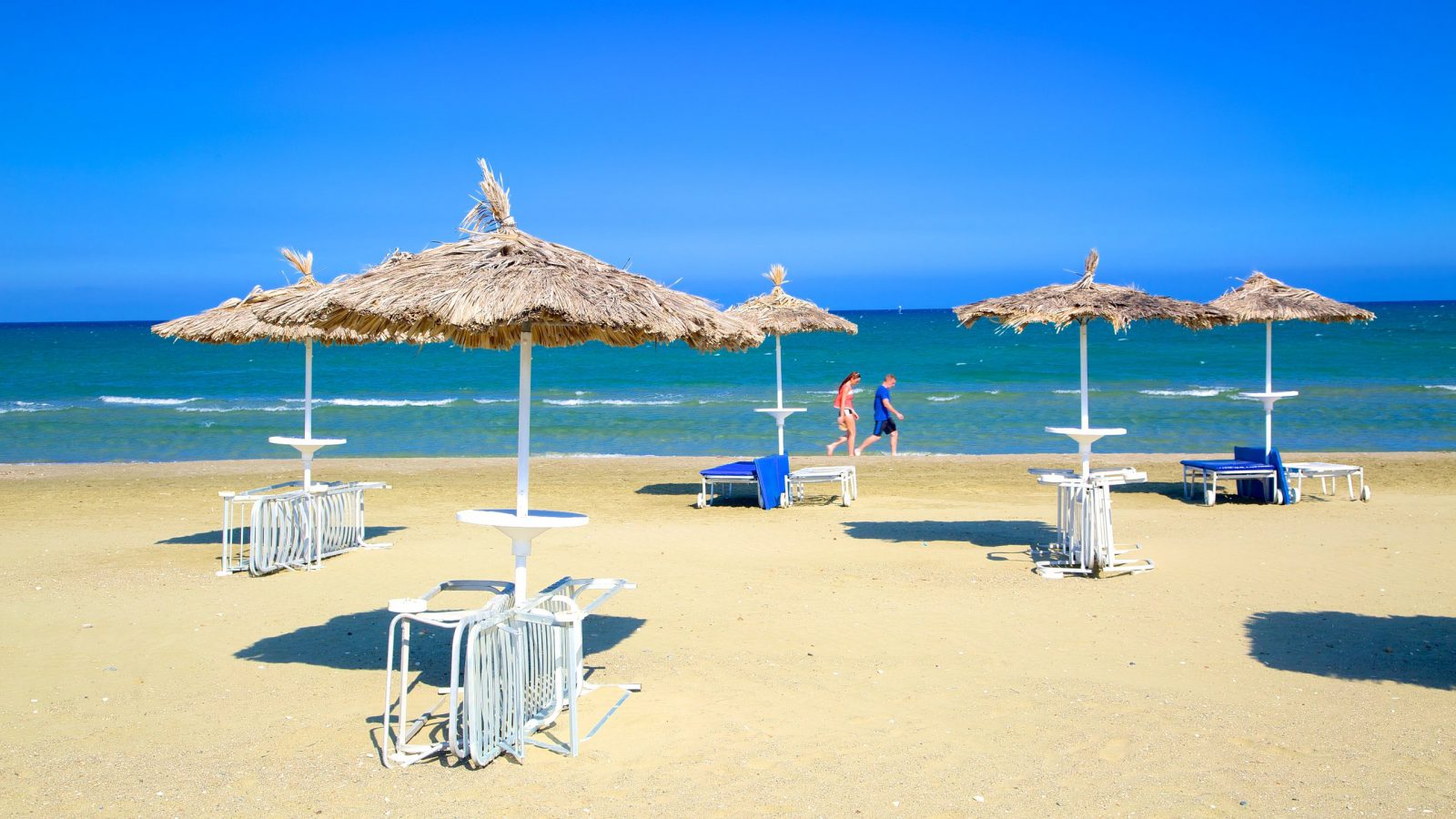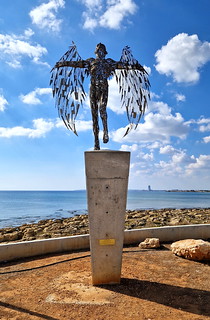Cyprus Travel Guide
Cyprus Travel & Tourism Information
Cyprus is an island country in the eastern Mediterranean Sea. It is the third-largest and third most populous island in the Mediterranean and a European Union member state. It has an area of 9,251 square kilometers and a population of 857,000. The capital and largest city is Nicosia.
The earliest known human activity on the island dates to around the 10th millennium BC. Archaeological remains from this period include the well-preserved Neolithic village of Khirokitia, and Cyprus is home to some of the oldest water wells in the world. Mycenaean Greeks settled Cyprus in two waves in the 2nd millennium BC. As a strategic location in the Middle East, it was subsequently occupied by several major powers, including the empires of the Assyrians, Egyptians, and Persians, from whom the island was seized in 333 BC by Alexander the Great.
Cyprus was placed under British administration in 1878 and formally annexed by the UK in 1914. The population rebelled in 1955 and 1974, seeking unification with Greece, but this was unsuccessful. In 1974, a coup by Greek Cypriot nationalists and an invasion by Turkey led to the island's division, as the self-proclaimed Turkish Republic of Northern Cyprus occupied the northern third. These events and the resulting political situation are matters of a continuing dispute.
According to international law, the Republic of Cyprus has de jure sovereignty over the island of Cyprus and its territorial sea and exclusive economic area, except for the British Overseas Territory of Akrotiri and Dhekelia, administered as Sovereign Base Areas. However, the Republic of Cyprus is de facto partitioned into two main parts: the area under the effective control of the Republic, located in the south and west and comprising about 59% of the island's area, and the north, administered by the self-declared Turkish Republic of Northern Cyprus. The UN buffer zone covers nearly 3% of the island's area. The sovereign territory of the Republic of Cyprus is thus reduced to less than two-thirds of the island.
Cyprus is a major tourist destination in the Mediterranean. With an advanced, high-income economy and a very high Human Development Index, the Republic of Cyprus has been a member of the Commonwealth since 1961 and was a founding member of the Non-Aligned Movement until it joined the European Union on 1 May 2004. On 1 July 2012, Cyprus became the first financial rescue case of the Eurozone.
The earliest recorded name for the island is Κύπρος (Kýpros), which is Greek for "copper" (in reference to the island's copper resources). The classical name was Ἀλεξάνδρεια (Alexandreia), the name Alexandria given to the port town of Limassol by Alexander the Great in 334 BC when Ptolemy I Soter was the satrap of Egypt. Alexandreia was used as a synonym for Cyprus by Strabo and Pliny the Elder.
Since around the 10th millennium BC, the island has been inhabited, with the first traces of human activity dating back to the Neolithic period. Cyprus is rich in archaeology, with many ancient Greek and Roman ruins and Ottoman and British remain. The island's history is long and complex, with successive conquerors, including the Assyrians, Egyptians, Persians, Greeks, Romans, Byzantines, Franks, Venetians, Genoese, Ottomans, and British.
Cyprus Photos
How to get to the Cyprus
Although the bulk of foreign visitors to Cyprus arrive on package tours, you can find competitive deals by arranging your own flights and accommodation. The republic has two international airports (Larnaka and Pafos), and there are frequent direct flights to both these airports from London, Manchester, and numerous regional airports in the UK. Other major hubs for Cyprus include Athens, Amsterdam, and Brussels. Turkish-occupied north Cyprus (the “TRNC”) has one international airport at Ercan to which there are no direct flights other than through Turkey. A ferry service also links Turkey with north Cyprus.
Since Cyprus is a smallish island and has an excellent motorway system joining all the main towns and holiday areas, the price can be as much of a factor as transfer times in choosing your airport. However, Larnaka is the biggest and busiest, and therefore offers the widest choice of flights and arrival times and links with the rest of the island.
There are no direct flights to Cyprus from the US, Canada, South Africa, Australia, or New Zealand, so journeys involve at least one change of plane, often in London, Athens, or Dubai.
Beach Weather
Cyprus has a temperate climate with many sunny days throughout the year. Winters are very short and mild, with average temperatures from +17 to +19 ° C. In the highlands in winter, the thermometer drops to a few degrees below zero, and snowfalls. Summer is hot, lasting from mid-May to mid-October. During this period, the temperature can rise to + 35 ° C in the shade, but due to the low humidity, the heat is easily tolerated.
The average water temperature off the coast of Cyprus in July is +23 ° C, in February (the coldest month) +14 ° C, the swimming season is open almost all year round.
Cities & Regions
The island of Cyprus has several excellent beach resorts and one ski resort.
The capital of the island – Nicosia – is an unpopular city among tourists, but definitely worthy of attention. It is the capital of two states at the same time – the Republic of Cyprus, where Greeks live, and Northern Cyprus, whose population is made up of Turks. This is a very beautiful ancient city, the first settlements date back to the 7th century BC. e. If you want to see an authentic non-touristy Cyprus, then you should set aside at least a couple of days to visit Nicosia. There are many museums in this city, as well as restaurants serving Balkan, Greek, and Turkish cuisine.
The largest and most popular Cypriot resort is the city of Limassol. It is located on the seaside and, in fact, is a “universal” vacation spot. For couples with children, there are water parks, an amusement park, and hotels with all the infrastructure of little travelers, for young people there are a lot of clubs, bars, and discos. In addition, this resort is considered the most international and “Russian-speaking”.
Ayia Napa is the “local Ibiza”, the funniest and most youthful resort on the island, where Cypriots themselves enjoy their holidays. The city has many great clubs, beach discos, and a wide variety of bars and restaurants. And compared to the same Ibiza, hanging out in Ayia Napa is several times cheaper.
The most inexpensive and “simple” Cypriot resort in Larnaca. There is nothing special, but it is great for a relaxing family vacation with children. Sandy beaches, a gentle entrance to the sea, and low prices for accommodation fully compensate for the lack of entertainment infrastructure. In addition, there is one of the two airports on the island.
The second airport is located in Paphos. This ancient city is known as the birthplace of the goddess Aphrodite and also as the most exclusive resort on the island. Wealthy people rest here, many luxury hotels and restaurants have been built. There is no special entertainment infrastructure and animation, but there are many beautiful bays, secluded places, and other opportunities for a relaxing holiday.
Protaras is a quiet resort town, already more budgetary. Many wide beaches, rocky coves, and inexpensive apartments are a good place to come on holiday with children. At the same time, if you wish, it is convenient to take a ride from here to Ayia Napa with its disco frenzy – just 15 minutes by taxi.
The small town of Polis, located in the north-west of the island, cannot boast of a large flow of tourists – and this is its charm. The locals just live their own lives, fish, and farm. Nobody entertains tourists here, but there is an opportunity to live in a real authentic Cyprus. Accommodation prices are significantly lower than in tourist centers, fish markets and fairs work on weekends, and if you’re lucky, you can see a yacht show.
The Troodos Mountains are a nature reserve and a must-see destination in Cyprus. These are cool cedar forests, in the shade of which are villages, Byzantine monasteries, ancient ruins, and small taverns. In winter, snowfalls in the Troodos mountains, and you can ski, while the rest of the time it is worth visiting the famous Kykkos Monastery, climbing Mount Olympos, visiting the pottery village of Kakopetria, or simply walking along the numerous mountain hiking trails.































